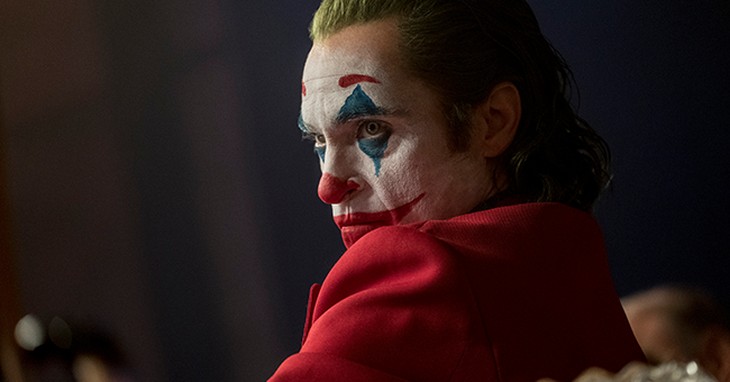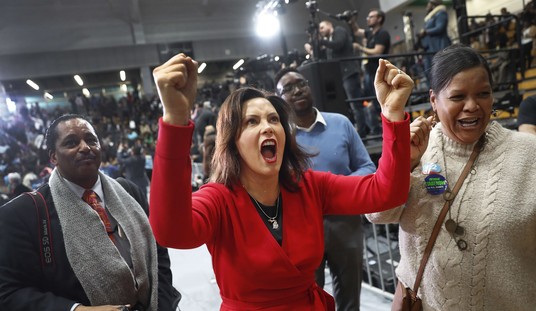The Batman, the latest movie about the well-known Caped Crusader, has been mostly well-received by critics so far. The film, by Matt Reeves, presents a different view of the Dark Knight on screen than we’re used to, and offers new takes on villains like The Riddler.
Featured in the movie, however, is a cameo by Barry Keoghan playing The Joker, one of the most infamous villains in Batman’s rogue’s gallery and the most depicted in media today. He is an unsettling character with a ghastly grin, white skin, and no moral compass whatsoever. He is, essentially, purely evil in modern depictions. Because there is absolutely no chance at redemption, he is a horror character outside of the genre.
However, I regret to inform you that, once again, he is also very problematic.
“You wanna know how I got these scars?” So goes one of the most memorable lines in the history of Batman, expertly delivered by Heath Ledger’s Joker in 2008’s The Dark Knight. In 2022’s The Batman, Joker similarly makes an appearance at the end of the narrative and in a deleted scene. Meant to add to the terrifying nature of the character, the design brings up a massive issue that permeates media: the so-called “Evil Cripple” trope.
Coming out of disability theory, the “Evil Cripple” trope essentially mandates that a person who is evil must, in some way, be a person with a disability. Whether this is the case of Long John Silver’s wooden leg or James Bond’s Safin, villains tend to have a disability or be visibly scarred, especially on their faces. The Joker is another instance of that, in spite of the success that non-scarred versions of the character demonstrate. By observing some harmful effects of these characters, one can more wisely note the trope when indicated and self-educate on the issues at hand.
What’s worse, the problem with Joker is that he is emblematic of the exact type of power struggle as described by noted reliever of conflicts, Karl Marx.
Beginning with Marx’s writings in the mid-1800s, literary critics began to work with narratives from the perspective of a power imbalance. Essentially, one group tends to have power, and one does not. Marx reserved this for money, but other theorists began to take the concept and apply it to social power and policy dynamics as related to different aspects of society, be it feminist theory, critical race theory or, most relevant here, disability theory. This theory states that people with disabilities tend to be treated as lesser by society, especially if their disability is visible.
The “Evil Cripple” trope is most easily seen in a character like It’s A Wonderful Life‘s Mr. Potter, who spends the entire movie in a wheelchair, yet serves as a major antagonist throughout the entire film because he longed for ever-increasing money and power. Less extreme (in some ways) is Peter Pan‘s Captain Hook, who sports a limb difference not only visually but also by his very name. Yet another variation, and the one employed by the vast majority of movies, is that of the scarred villain.
I will grant you that, yes, there is a trope among television shows and movies that dictate the scarred, maimed, and disfigured are more likely to be villains or are at least more likely to be suspected of such, but for there to apparently be an entire field of study dedicated to studying this as a sub-genre of Marxist theory is a bit of a stretch. And, it may shock some people to know that you don’t have to find some political or social theory that explains every villain or motivation behind that villain (or behind the creation of the villain).
The problem with the Joker, though, isn’t his scarring. That’s not what makes him unsettling. In The Dark Knight, it’s the fact that he tells multiple stories about them while he’s threatening to disfigure people himself. In The Batman, it’s how the scars obfuscate who he is. In the comics, his face has been cut off and fought over. All of this is unsettling, but it’s not the reason the Joker is the villain. The scarring and disfigurement are just tools he uses to scare people.

What makes the Joker a perfect villain isn’t the fact that there scarring. It isn’t the insanity. It’s the fact that he is evil. There is no redirecting him back onto a “right” path. He deeply disturbs us because of his insistence that we’re all just a bad day away from being like him – and we fear he’s absolutely right about that.
Evil is far more frightening than just a bad person. A bad person just has bad motivations. We can understand them a bit and we can come to terms with the fact that the villain just took a wrong turn. But when there is just evil, we desperately seek the logic behind it. We try to find the reasons behind the evil acts a truly bad person commits, and when that person is just evil we can’t find any reasons behind it. That’s what evil is. It exists for the purpose of existing and that’s it.
Take the subway shooting in New York yesterday. We are trying to find the logic behind it. We scour social media, we look for their political or ideological leanings, and we cling to those because we must understand. But what makes someone go into a crowded a subway, open a smoke canister, and start shooting people in the confusion? Nothing sane. Nothing logical. It’s the absence of all that, and the chaos and fear in a small, tight space like a subway car makes it all that much worse for the victims.
The Joker’s scars are not what makes him a villain any more than the suspect in the subway shooting opening a smoke canister does. It’s the acts they commit. You can’t explain it all away with some theory on social injustices. Evil is just evil. There’s no way to explain it.












Join the conversation as a VIP Member